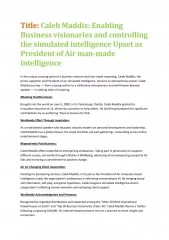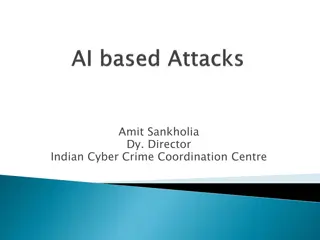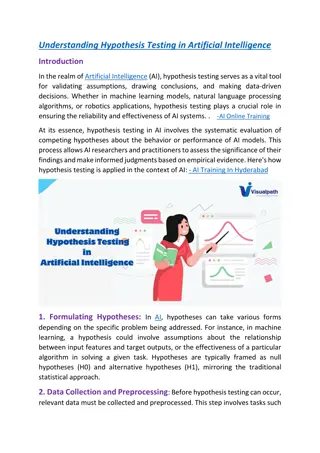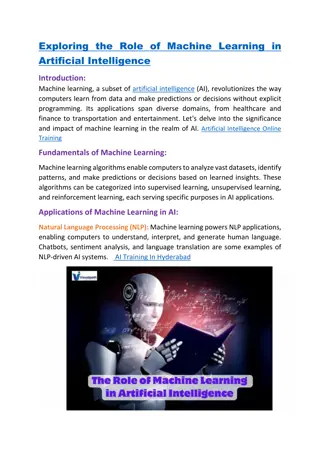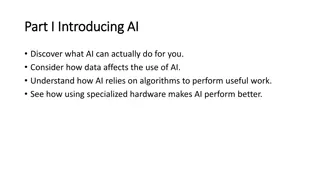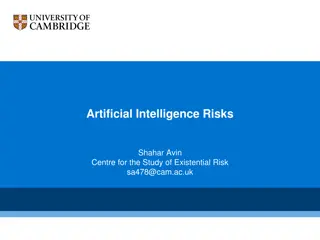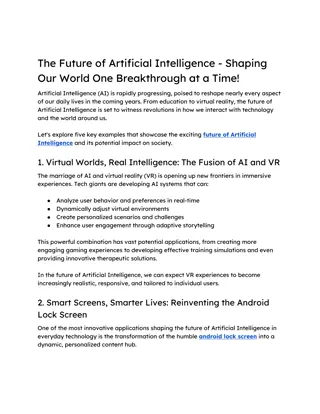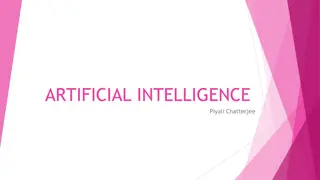Exploring the Malicious Use of Artificial Intelligence and its Security Risks
Delve into the realm of artificial intelligence and uncover the potential risks associated with its malicious applications, including AI safety concerns and security vulnerabilities. Discover common threat factors and security domains that play a vital role in combating these challenges.
Download Presentation

Please find below an Image/Link to download the presentation.
The content on the website is provided AS IS for your information and personal use only. It may not be sold, licensed, or shared on other websites without obtaining consent from the author. Download presentation by click this link. If you encounter any issues during the download, it is possible that the publisher has removed the file from their server.
E N D
Presentation Transcript
The Malicious Use of Artificial Intelligence Shahar Avin Centre for the Study of Existential Risk sa478@cam.ac.uk
Risk Quadrants Accident Risk (AI Safety) Malicious Use Risk (AI Security) Amodei, Olah et al (2016) Concrete Problems in AI Safety Brundage, Avin et al (2018) The Malicious Use of Artificial Intelligence: Forecasting, Prevention and Mitigation Near Term Leike et al (2017) AI Safety Gridwolds Bostrom (2014) Superintelligence Long Term :(
Background: capabilities https://blog.openai.com/ai-and-compute/
Background: access arXiv GitHub TensorFlow Coursera / YouTube Cloud GPUs / Cloud TPUs
Background: vulnerabilities http://karpathy.github.io/2015/03/30/breaking-convnets/
Common threat factors Expand existing threats Scale Skill transfer Diffusion
Common threat factors Introduce novel threats Super-human performance Speed Attacks on AI systems
Common threat factors Alter character of threats Distance and difficulty of attribution Customization
Security Domains Digital Security Against humans: automated spear phishing Against systems: automated vulnerability discovery Against AI systems: adversarial examples, data poisoning
Security Domains Physical Security Using AI: repurposed drones, robots Against AI: adversarial examples
Security Domains Political Security By governments: profiling, surveillance Against polities: manipulation, fake content
Recommendations Policymakers should collaborate closely with technical researchers to investigate, prevent, and mitigate potential malicious uses of AI.
Recommendations Researchers and engineers in artificial intelligence should take the dual-use nature of their work seriously, allowing misuse-related considerations to influence research priorities and norms, and proactively reaching out to relevant actors when harmful applications are foreseeable.
Recommendations Best practices should be identified in research areas with more mature methods for addressing dual-use concerns, such as computer security, and imported where applicable to the case of AI.
Recommendations Actively seek to expand the range of stakeholders and domain experts involved in discussions of these challenges.
Priority research areas Learning from and with the Cybersecurity Community Red teaming Formal verification Responsible disclosure of AI vulnerabilities Forecasting security relevant capabilities Security tools Secure hardware
Priority research areas Exploring Different Openness Models Pre-publication risk assessment in areas of special concern Central access licensing model Sharing regimes that favor safety Dual-use norms
Priority research areas Promoting a Culture of Responsibility Education Ethical statements and standards Whistleblowing measures Nuanced narratives
Priority research areas Developing Technological and Policy Solutions Education Privacy protection Coordinated use of AI for public-good security Monitoring of AI-relevant resources Explore legislative and regulatory responses
Since the report (random roundup) Global media coverage Featured in House of Lords report Cambridge Analytica story, Facebook congress testimony ACM call for impact assessment in peer review process DARPA project on deep fakes Project MAVEN discontinuation and Google s AI principles DeepPhish
Questions? Shahar Avin sa478@cam.ac.uk


